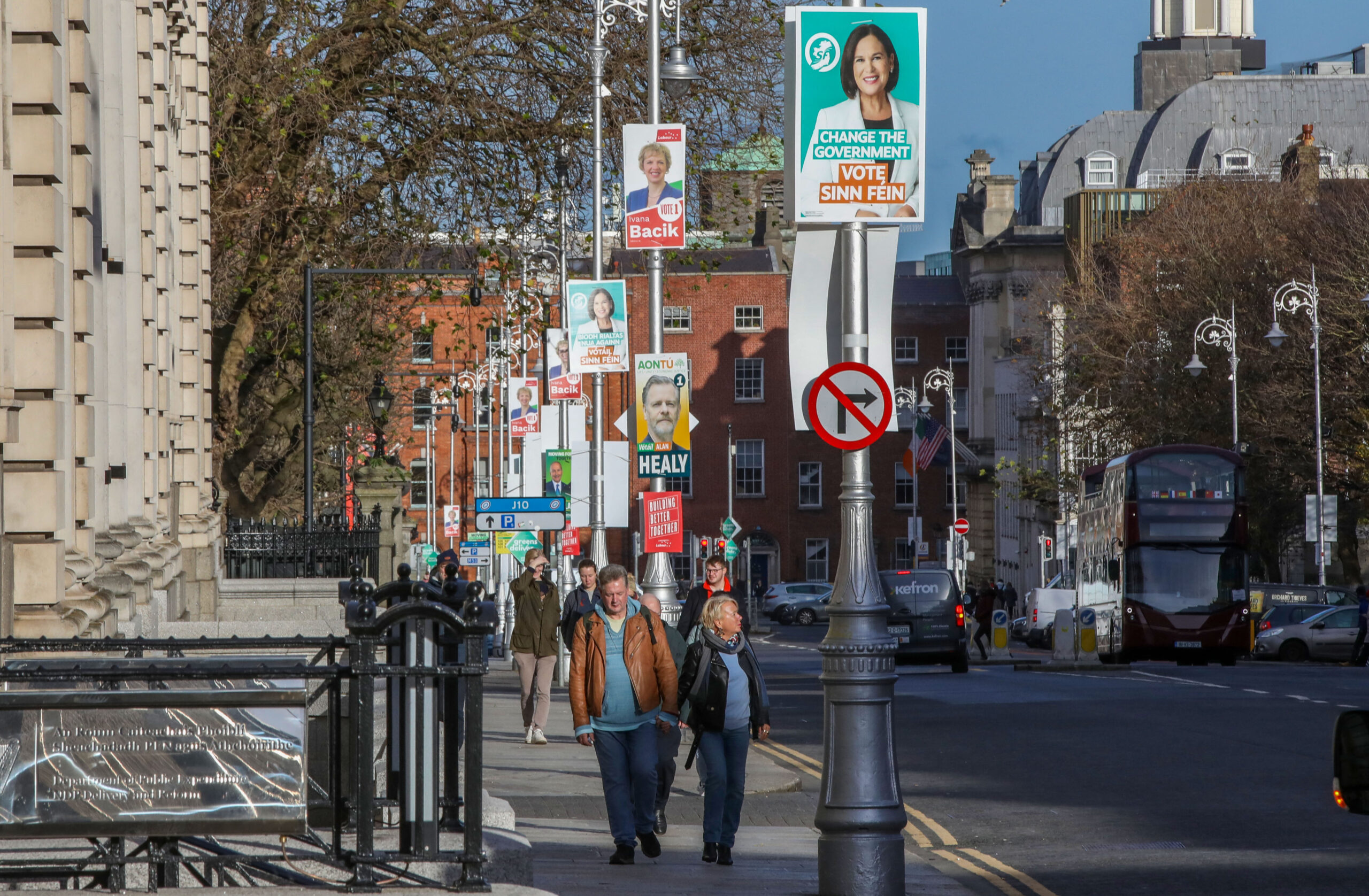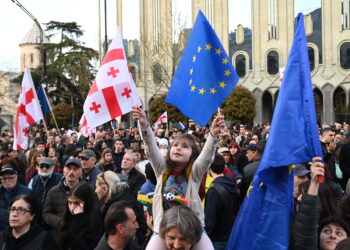Brussels – Today (Nov. 29), more than three-and-a-half million Irish citizens are called to the polls to renew their parliament and elect a new Taoiseach (prime minister). Scheduled for February 2025, the election was brought forward by outgoing premier Simon Harris, leader of the center-right Fine Gael party, to take advantage of the high approval rating recorded in the polls until last month. However, in a month of campaigning, much has changed, and the latest polls before the vote opens put Harris even in third place.
Both the governing allies of Fianna Fáil, the party led by the former premier — and current foreign minister — Micheál Martin, and the left-wing Sinn Féin, the historic Irish independence party in the hands of Mary Lou McDonald, came before Harris. The data released by the Irish Times earlier this week indicate a close fight, with Fianna Fáil at 21 percent, Sinn Féin at 20 percent, and the prime minister’s party behind with 19 percent. Before Harris called the election in early November, Fine Gael was projected at 27 percent.

With these numbers, it is highly unlikely that any of the three parties will single-handedly secure the parliamentary seats needed for a majority in the Dail, the 174-member Lower House of the Irish Parliament. The most probable scenario is that the two centrist parties — Fine Gael is part of the European People’s Party family, and Fianna Fáil of the Renew Liberals — will adjust the makeup of the coalition already in place and continue to govern. Since both parties excluded any collaboration with McDonald’s radical left, which was also cut off in 2020, when they won the election, they will have to seek the support of one of the smaller parties.
According to the same poll, the Greens – the current ‘third pole’ of the Harris majority – entered election week with 4 percent support, as did Labor. Further ahead are the Social Democrats, at 6 percent, while the Aontú Conservatives and the far-left People Before Profit party are projected at 3 percent.
Independent candidates – who have 17 percent of the vote together – could play a decisive role, partly thanks to Ireland’s peculiar electoral system. Dublin uses the Proportional Representation Single Transferable Vote (PR-STV), a proportional mechanism with transferable preferences. In practice, based on the multi-member constituencies, voters are asked to rank the candidates by “numbering” them on the ballot. Preferences are counted, and TD (members of parliament) are elected directly upon crossing the predetermined threshold.
The TikTok Taoiseach, the nickname given to Harris for his frequent use of the platform, has squandered several points over the fast-paced campaign because of a few blunders which, in a kind of poetic justice, went viral on social media of all places: the most significant was a video in which Harris responds sharply and rudely to the employee of a foundation that assists people with disabilities, for which the premier was forced to apologize publicly.
In terms of policy proposals, on the other hand, there are no significant differences between the two governing allies: the country is resting on an economy that is booming thanks in part to an €8.6 billion budget surplus accrued from the tax levy on Irish-based multinationals. Google, Apple, Meta, Microsoft, Pfizer, Johnson&Johnson, and Amazon, to name a few. From a rights perspective, Fine Gael and Fianna Fáil see eye to eye, with both having promised a crackdown on illegal immigration, an issue perceived by Irish citizens as closely linked to the housing crisis. Perhaps precisely because the only alternative in the face of two parties that are equivalent, Sinn Féin leader Mary Lou McDonald believes: “The momentum for change is now behind Sinn Féin. We have never been closer to achieving change,” she declared on her X account in the morning pushing voters to go to the polls.
English version by the Translation Service of Withub










